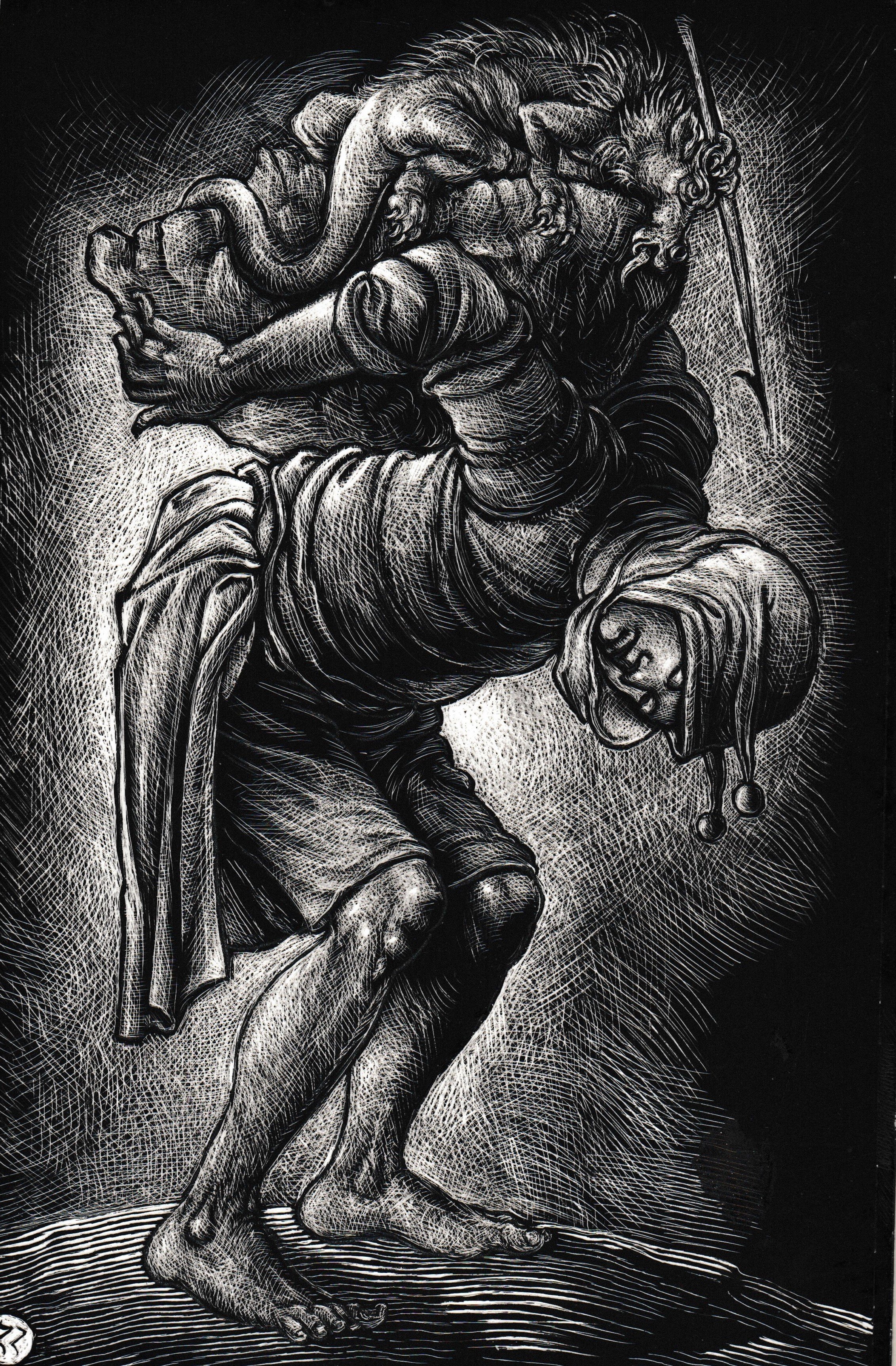Scrape Engraving
At the origin of this novel engraving technique, characterized by extreme immediacy and notable ease, lies the attempt to transfer the operational modes and creative freedoms inherent in Scratchboard to the realm of Fine Art Printmaking, thereby producing matrices capable of ensuring the serial reproducibility of the artwork.
In the Scratchboard technique, the artist merely scratches the blackened surface of the support to reveal the white of the underlying base.
In contrast, the engraver using Scrape Engraving, while maintaining a similar execution gesture, is able to impart to the graphic texture the intrinsic value of the engraved mark, as it lifts from the support the characteristic chip of material removal typical of the burin.
This is made possible by the particular design of the tool tip, the Scrape Graver, whose effectiveness is due to the correct angular relationships of the three elements that form the cutting edge:
FA° (Face Angle) - The Angle of the Face
YA° (Yaw Angle) - The Yaw Angle of the Lateral Heels
VA° (V Angle) - The V Opening Angle of the Cutting Edge
Two different front configurations are also provided: Symmetrical and Asymmetrical.
The tip allows for dual use, differentiated by execution mode and quality of the cut. The Scrape function creates a mark characterized by its own distinctive and expressive quality. Conversely, the Vertical function allows for a geometric mark very similar to that made by the classic burin.
It is therefore a Direct Engraving technique that can be used interchangeably for Intaglio and Relief Printing.















